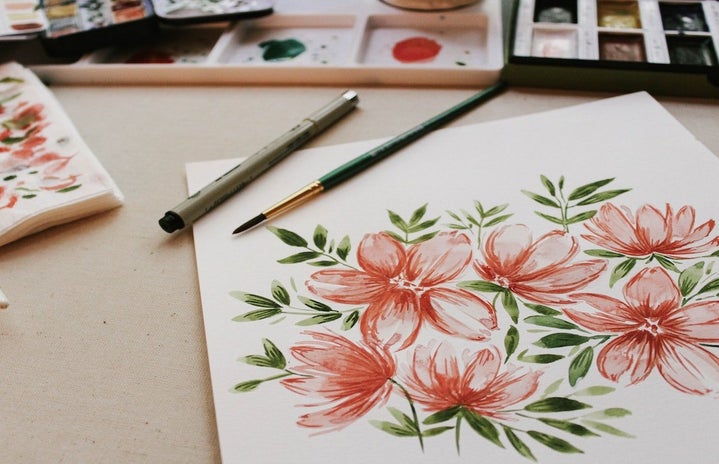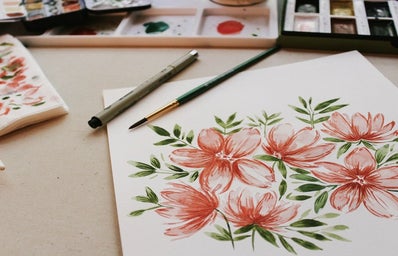When I was younger, I always loved the random creative projects I did in elementary school art classes. I always had a creative side and loved experimenting, but I felt like I was never on the same level as the other artistically talented kids in the class—those who could paint and draw the most realistic and incredible pictures. Little did my eight–year–old self (who thought macaroni necklaces showcased the pinnacle of my artistic ability) know that I would one day consider myself an artist.
How did I go from coloring books and stick figures to detailed, sophisticated drawings? Well, during the beginning of quarantine last spring, I decided to take up new hobbies to keep myself occupied. I purchased a bunch of drawing and art supplies and just ran with it. The next thing I knew, I was drawing realistic portraits and gifting them to friends and family. I began to consider myself an artist, and that’s coming from someone who, in the past, tried to pass stick figures off as people.
As the line goes in my favorite movie, Ratatouille, “Anyone can cook.” I believe the same goes for art—anyone can draw—and no, I won’t ever stop quoting the wise Chef Gusteau and Remy the Rat. I began to realize that pursuing art shouldn’t be intimidating, and anybody can be an artist with just the slightest bit of effort. Here’s a few pieces of advice on how to tackle the daunting task of picking up pencil and beginning.
As with everything, starting is always the hardest part. During my abundant newfound free time in quarantine, I ordered a drawing pad and a case of pencils—because Amazon can convince me I need anything. When the materials came, I had no idea where to start; so of course, I turned to my trusty friend, YouTube.
My first suggestion is to figure out what style you’re into—whether it’s landscape, portraiture, or still life, there’s something out there for everyone. I’ve always been impressed by the realistic eyes and faces in the drawings that pop up on my Instagram explore page because, again, my phone really knows how to target me. The first thing I did was look up a tutorial on how to draw an eye, because that seemed like a manageable place to start. I found an amazing thirty–minute video that gave me a step–by–step guide to how and where to draw my lines. At the end of the video, I looked at the page, and, to my surprise, I had drawn an almost perfect eye. This first task made me realize that, though it may seem daunting, drawing can consist of just following a guide until you feel comfortable to do it on your own.
After you tackle your first small sketch, move on to something bigger—or add to your initial draft! After I successfully tackled the eye, I moved on to a video on how to draw lips, a nose, ears, and eventually, I had a whole face down on the page.
I have a friend who’s an artist, and she told me that when she started drawing, she also looked up tutorial videos, because it helped make the art feel more manageable. After watching tutorials on how to draw whatever subject you’re interested in, I recommend looking up style videos so you can personalize your sketches with personal flare. For example, I learned nifty tricks like using a Q–tip to blur the lines in a sketch or using a tissue to smudge them.
Though it may sound like “cheating,” another tip that really helped me in the beginning of my artistic learning process was tracing drawings. I would print out photographs of something I wanted to draw and use tracing paper to outline it. This helped give me a sense of the pencil’s motions and the pressure I needed to apply to shade effectively.
If all of this sounds overly simple, that’s because it is! It’s as easy as picking up a pencil, watching a tutorial, and getting started. I never thought I had artistic ability, and now drawing is my favorite hobby—so I always encourage everyone to try!


